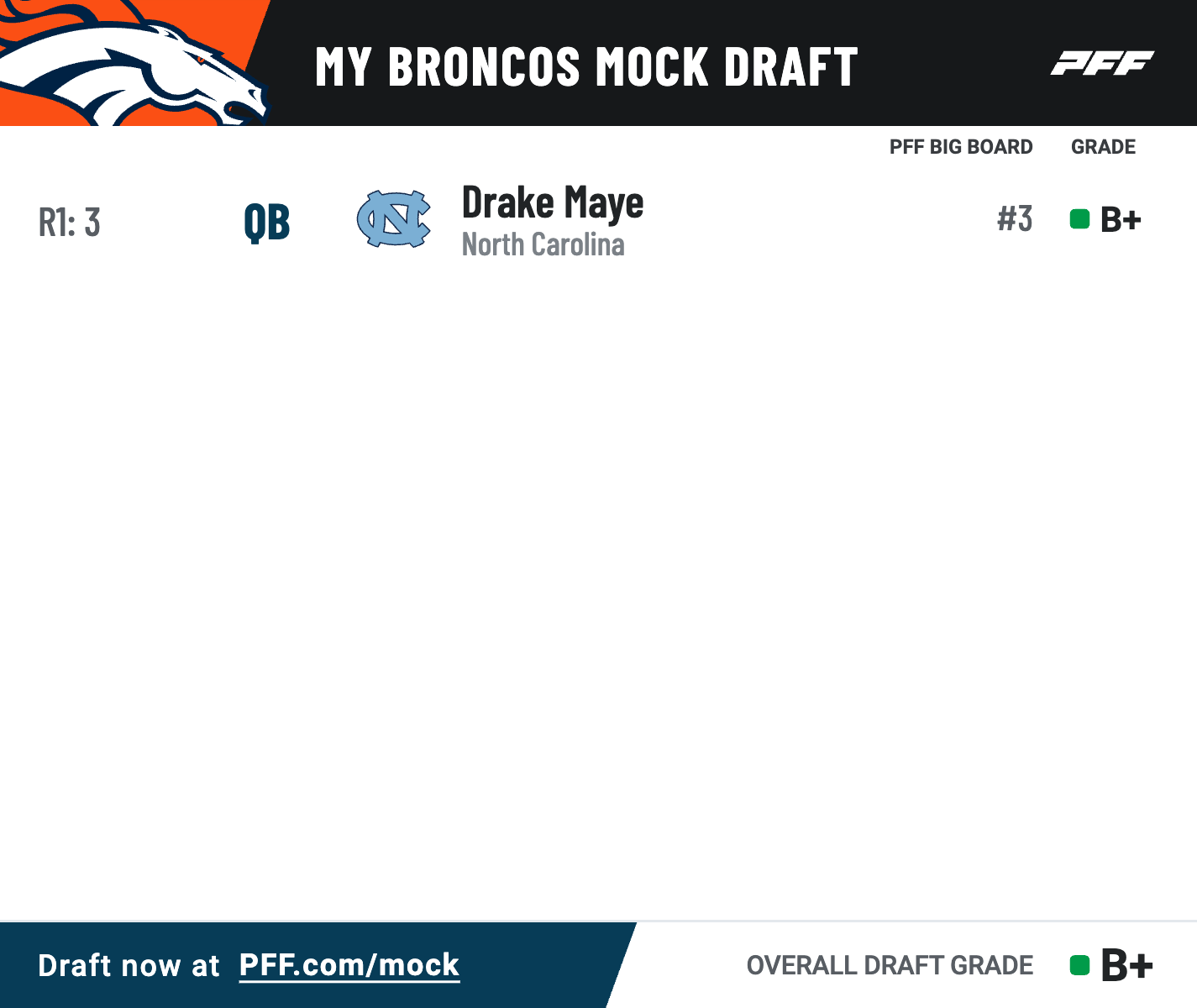• The 1-5 Broncos have decisions to make: Russell Wilson’s days in Denver appear to be numbered, even when factoring in the team's massive contractual commitment to him.
• The best outcome at this point: The Broncos could look to designate Wilson as a post-June 1 release in the first few days of the 2024 league year.
• The implications of a post-June 1 release: Denver would be on the hook for Wilson's $39 million salary for 2024, a $35.4 million 2024 dead cap hit and a $49.6 million 2025 dead cap hit if they spread out his option bonus.
Estimated Reading Time: 5 minutes
The Denver Broncos‘ offense played some solid football early in the season despite their 1-5 record, hanging 30-plus points on the Washington Commanders and Chicago Bears with solid drive conversion metrics and offensive success rate metrics. However, it’s clear their production that largely came once they were down a bunch of points in three straight games was inflating an otherwise pedestrian offense through five weeks. The veil was lifted in Week 6 when Denver managed just 95 passing yards with two interceptions against the Kansas City Chiefs.
One thing is becoming clearer with each passing week: Russell Wilson’s days in Denver are numbered, even when factoring in the massive contractual commitment that still remains. So, what can the Broncos do to get out of this contract as cleanly as possible?
The best outcome for Denver at this point is likely a post-June 1 release in the first few days of the 2024 league year. Wilson is owed a $17 million salary and has a $22 million option bonus in 2024, which the team can choose to exercise and spread out over the salary cap or decline and take that full hit as a $39 million salary.
Here are the full salary cap implications of a post-June 1 release on the first day of the 2024 league year, and we’ll say they do ultimately choose to let the $22 million option bonus get spread out so that one-fifth ($4.4 million) is accounted for in 2024 and four-fifths ($17.6 million) is accounted for in 2025:
Salary Cap Implications of a Post-June 1 Release
- Pay Wilson $39 million for 2024
- $35.4 million 2024 dead cap hit
- $49.6 million 2025 dead cap hit
If the Broncos wanted to decline the option, they’d have a $53 million dead cap hit in 2024 and a $32 million hit in 2025, which could make the most sense long term. There are even more aggressive options they could consider right now, but we’ll let things play out.
Best outcome for Denver at this point:
– Post-June 1st release first day of 2024 league year
– Pay him $39M for 2024
– $35.4M 2024 dead
– $49.6M 2025 dead5 days into 2024 league year his 2025 salary of $37M becomes fully guaranteed for his age 37 season, can't allow it https://t.co/LXpGlsSgXP
— Brad Spielberger, Esq. (@SpielbergerBrad) October 13, 2023
Whatever decision Denver makes with the option, this release has to happen. Five days into the 2024 league year, Wilson’s 2025 salary of $37 million becomes fully guaranteed for his age-37 season, which is very hard to manage. For folks thinking the $85 million in total dead cap is simply too prohibitive, Wilson's total dead cap would actually increase to $86.6 million in 2025 if the Broncos were to allow further guarantees to kick in. Biting the bullet as soon as possible is the only way.
Denver will have large dead cap hits in the first two years of a rookie quarterback contract, which is very common across the NFL as teams overhaul rosters and work to get younger around a new signal-caller. The Carolina Panthers and Green Bay Packers are both top five in dead cap this year, the Chicago Bears and Atlanta Falcons were in the same boat last year and so on and so forth.
There are potential offsets on Wilson’s guarantees if another team signs him this offseason after getting released, but it presumably won’t be a sizable benefit. The Broncos also have the richest owners in the sport by a comfortable margin, so they can spend cash well above the actual salary cap number each year if they choose, with large signing bonuses in free agent contracts to keep cap numbers low in 2024.
Russell Wilson Career PFF Grades

Will Wilson continue to start through the 2023 season?
Denver signed backup quarterback Jarrett Stidham to a two-year, $10 million contract — which is not insignificant, given the current situation. The Las Vegas Raiders benched Derek Carr at the end of last season for Stidham, and it wasn’t just about Carr’s poor play. Carr had injury guarantees remaining on his contract, where any significant injury that made him unable to pass a physical at a later date would lock in money for him. The same principle applies to Russell Wilson, with injury guarantees of $37 million in 2025 and $4 million in 2026 as of today.
It’s still early in the Broncos' season, and like we said at the beginning, Wilson hasn’t been all bad. However, Denver has a bye week in Week 9 after another showdown with the Kansas City Chiefs. Coming out of that bye, it’s feasible we see the team hand over the reins to Stidham.
Could Denver try to pull off a salary-dump trade?
This idea will continue to pop up, with the infamous Brock Osweiler trade serving as an example. The Browns agreed to inherit $16 million in cash obligations on Osweiler in return for a 2018 second-round pick and a pick swap in 2017. That second-round pick turned into running back Nick Chubb, so from a results-based perspective, it was a success in addition to what we believe to have been a sound process from then-general manager Sashi Brown. Houston prioritized the cash/cap savings over the draft pick, and they still landed quarterback Deshaun Watson in that 2017 NFL Draft, so it also arguably worked out for them in the short term.
With Wilson, the obligation the new team inherits is obviously much larger, and the draft pick compensation the Broncos would have to attach with Wilson would also be much larger as a result. Denver traded multiple first-round picks to acquire Wilson and traded first- and second-round picks to hire head coach Sean Payton. As a result, this is a team severely lacking in young talent. Odds are the Broncos don’t want to continue to add to that void by moving premium draft capital. In this instance, they should take the financial hit and turn their eyes to 2024 and 2025 with a rookie-contract quarterback.





 © 2025 PFF - all rights reserved.
© 2025 PFF - all rights reserved.